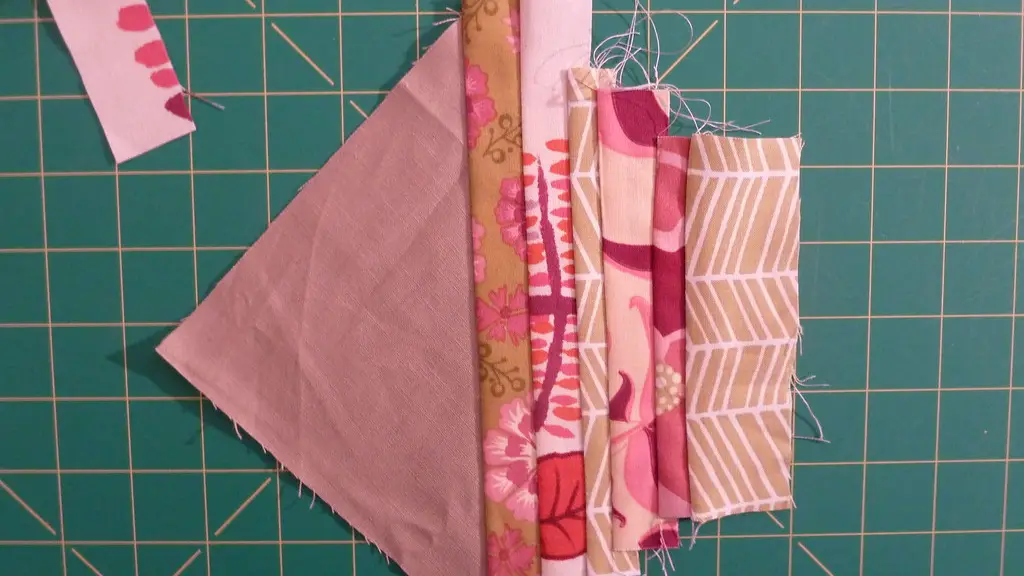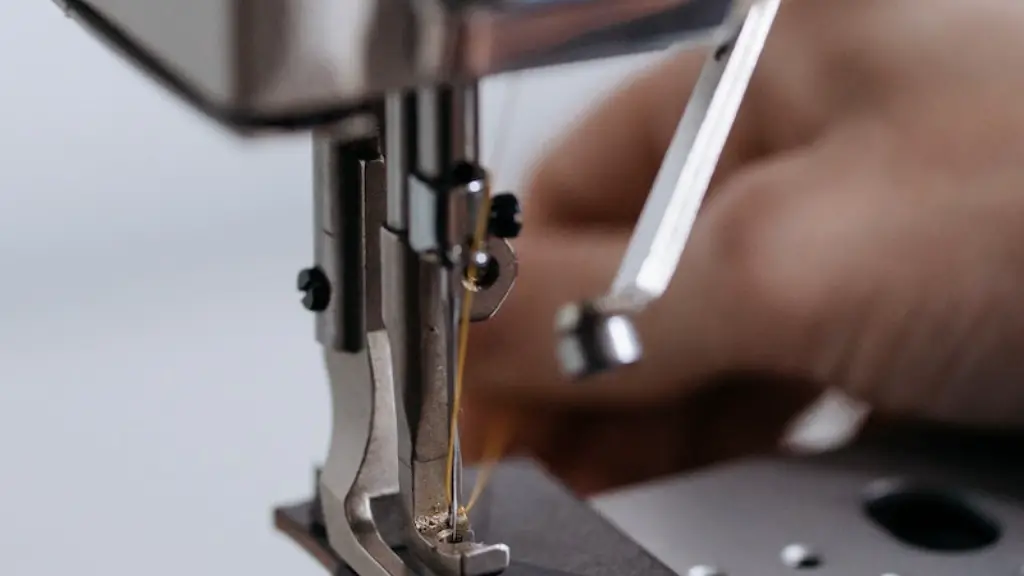Materials and Supplies
To get started quilting on a Brother sewing machine, the first step is to decide what materials and supplies to purchase. Quilters need to purchase a Brother sewing machine and the necessary materials such as fabric, batting, thread, and quilting needles. In some cases, quilters may choose to use pre-cut quilt pieces, known as kits, to make the task of quilting easier. The quilting fabrics of the kit are usually pre-cut and ready to sew together, and the quilter just needs to assemble the pieces.
Before quilting, quilters should prepare and mark the fabric. Measure the width and length of the quilting fabric, and mark off the center, as well as intersecting lines for the pattern’s design. This can be done with a chalk pencil, marking pen, or template. Quilters should also cut out the batting and backing to the exact size of the quilt.
Thread and Needles
Next, quilters should assess the type of thread and needles they will need for their quilt. Quilters should think about both the type of thread they need and the needle they should purchase. For quilting, the most commonly used thread is cotton, either in the form of all-purpose or quilting weight. For this project, all-purpose cotton thread is best. As for the needles, quilters will need a quilting needle size 80/12, or 12/80.
In addition to the type of thread, quilters should also think about the color of the thread. Quilting can be done with matching or contrasting colors of thread. If quilters are opposed to using a neutral color thread, they also consider using a variegated thread. A variegated thread can add color and texture to the quilt. Finally, just as with any other sewing project, quilters should remember to match the thread weight to the fabric weight to avoid frustration caused by the excessive tension.
Setting Up the Machine
After the quilting materials have been prepared and the thread and needle chosen, the next step is to prepare the Brother sewing machine for quilting. Quilters should start by raising the presser foot and adjusting the stitch length to 3.5mm. Quilters may need to adjust the presser foot pressure if the thread is breaking. Next, the quilt sandwich needs to be loaded onto the sewing machine. For this step, quilters should make sure that the batting, backing fabric, and top layer are placed in the center of the sewing machine.
In order to ensure that the quilt will not be marred by the needles, quilters should use a machine quilting foot. The machine quilting feet come in many models and can be used for a variety of quilting patterns. In addition to the foot, quilters will also need to adjust the needle position to the center. This will ensure that the needle pierces through the fabric evenly and allows the quilt to have a uniform look.
Quilting
Once the machine is set up, the next step is to start quilting. Quilters should think about their quilting patterns and start on one corner of the quilt. Begin stitching along the marked lines, and use the machine quilting foot to guide the quilt. Quilters should also remember to stitch outward from the center so that the quilt does not become bunched up. It can help to use a walking foot, which attaches to the Brother sewing machine and provides extra guidance and control to the fabric.
Quilters should also make sure to pay attention to the entire quilting process, from threading the machine to checking the tension of the fabric. This will ensure the quilting process is easy, and the end product has a professional look. Finally, quilters should change their needle regularly to prevent breakage and other problems.
Binding the Quilt
Once the quilt is finished, the next step is to bind the quilt. Quilters should measure four corners of the quilt and mark the correct length with a fabric marker. Then, measure and cut the binding strips. Quilters need to cut enough strips to cover the entire length of the quilt. The strips should be the same length, but slightly wider than the quilt so that they can be rolled over.
Next, quilters should sew the binding strips to the quilt. To do this, quilters should use a stitch length of 2.5 mm and sew the two strips together. Once the strips are attached, quilters should fold them over the edges of the quilt and pin in place. Quilters should also make sure to use a walking foot to help hold the fabrics together as they are being stitched.
Finishing Touches
The last step is to add the finishing touches to the quilt. Quilters should trim away excess batting and backing fabric, and then sew the binding down. Quilters should take extra care to ensure that the corners are mitered properly and that the stitches are even and the binding is secure. Quilters may also like to include labels on the finished quilt that include the name of the quilt, the designer, and the date.
Once all of these steps have been completed, quilters should have a beautiful and durable quilt that is ready to display. Quilters should be proud of their hard work and skill, and share the quilt with others. Making a quilt on a Brother sewing machine is a rewarding experience, and with patience and attention to detail, the quilt will turn out looking professional and beautiful.
Size and Design Options
The size and design of a quilt are limited only by the imagination of the quilter. Quilters can make any size quilt they prefer, and most Brother sewing machines have the ability to accommodate larger quilts. Quilters can also customize the design of their quilt by adding applique and intricate patterns. Quilters can use a wide variety of fabrics to create the quilt of their dreams.
Moreover, there is no limit on the types of quilting patterns that can be created. Quilters can choose from a variety of designs, from the traditional to the modern. For example, quilters can choose from a variety of predominantly straight line designs, such as diamonds, bows and arrows, and flowers. Additionally, quilters can choose from an array of free-motion quilting designs, such as feathers, swirls, and hearts.
The size and design of the quilt can also be determined by the occasion for which the quilt will be made. For example, baby quilts are usually smaller than adult size quilts and can be designed with simpler patterns. Additionally, many quilters choose to use bolder and brighter colors when designing a quilt for a child. By choosing the right size and design, quilters can be sure to create a quilt that the recipient will cherish and keep for years to come.
Care and Maintenance
When it comes to caring for a quilt, the quilter should be mindful of proper storage and handling. Make sure that the quilt is stored in a place where it can be protected from sunlight and heat. Additionally, the quilt should be kept away from areas with a lot of moisture, such as bathrooms and laundry rooms. Quilts that are stored in a tightly woven cloth bag can help protect the quilt from dust and other elements.
In addition to proper storage, quilters should also take proper care when handling the quilt. Quilts should always be handled with care and not tugged or stretched. Quilters should also never fold the quilt, as this can create permanent creases and damage the fabric. When cleaning a quilt, quilters should use a gentle detergent, avoid heat, and never use a washing machine or dryer.
Quilting Projects and Classes
Quilting is an enjoyable activity that can be done alone or with a friend. Quilters should consider looking into local quilting classes and quilting project groups. These classes and groups can provide instruction, feedback, and support to aspiring quilters. Additionally, these classes and groups can offer quilters the opportunity to meet new people and form a supportive quilting community.
Quilting project groups are a great way to stay motivated and to learn new techniques. The groups meet regularly and share ideas, techniques, and stories about their quilting experiences. Additionally, these groups can provide quilters with the opportunity to build a network of likeminded quilters. This network can come in handy for upcoming projects, help with difficult tasks, and provide support and encouragement as the project progresses.
Quilting classes are another excellent resource for quilters of all levels. Quilting classes offer processes and tips for specific projects, as well as instruction on the basics of quilting. The classes can be great for novice quilters who are just getting started, or experienced quilters who are looking to refine their skills. From classic quilt patterns to modern developments, quilting classes can provide quilters with a place to learn and grow.
Quilting Community
No matter the quilter’s experience level, there is a quilting community out there that can welcome them with open arms. Quilters can find these communities online, at quilting shows, or even in their local community. Quilting is a craft that can bring comfort and joy and as a result, quilters form strong connections with one another. Through these connections, quilters are encouraged to experiment and push the boundaries when it comes to their quilting projects.
The quilting community is filled with expert quilters and those that are new to the craft. No matter the level of experience, quilters can find a sense of camaraderie in the quilting community. Quilters can turn to each other for advice and support, giving each other encouragement and guidance. Whether it is through online forums and blogs, quilting shows, or local meet-ups, the quilting community can be an invaluable resource for quilters of all experience levels.
Sharing Quilts
When quilters complete a quilt, they may be ready to share it with friends and family. Quilters can display their quilts publicly at quilt shows or keep them at home for their own enjoyment. Quilters can also turn to the online community to showcase their quilts and share quilting tips and advice with others. Whether shared through in-person meetings, quilt shows, or online, quilts can serve as a reminder of the hard work and love put into each project.
These quilting tips and advice can be beneficial to both beginner qu





